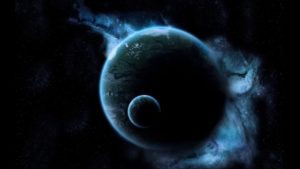This comes to us from an Op-ed by Theoretical physicist Lisa Randall who posits that we give short shrift to the unseen theoretical powers of dark matter to our own detriment or at least the detriment of science.
What is dark matter you ask? Dark Matter is invisible matter that takes up a little more than 80% of the total mass in the universe whereas the baryonic matter, aka the visible matter that we spend most of our time ignoring while we play video games, makes up the small remainder. Despite Dark Matter being invisible to all spectrum of light it can be observed by it’s gravitational affect on galaxies. Another example of this gravitational influence is that our universe is accelerating outward rather than slowing down even though it should definitely be slowing down based on how much visible matter exists.
So dark matter is strange in it’s own right. But Randall believes we don’t know the half of it.
Randall essentially theorizes that our bias toward square-jawed baryonic matter blinds us to the possibility that an inverse world of invisible energy may in fact be creating rich and diverse dark matter worlds outside our ability to perceive them.
she says “an unbiased scientist shouldn’t assume that dark matter isn’t as interesting as ordinary matter and necessarily lacks a diversity of matter similar to our own.” She continues “What if the world of dark matter—if not equally rich—is reasonably wealthy too? She posits that life could be one possible consequence of a rich world of dark matter.
Of course when I read that I instantly conclude that she must be referring to the elusive and sinister shadow people who’ve haunted many a “light-matter chauvinist.” Could Mrs. Randall be onto something here? Could dark matter be breeding malevolent anti-human life?
The answer is yes, it’s always yes.

They only thing Shadow People have in common with normal people is that their Republican’s are just as lame.
